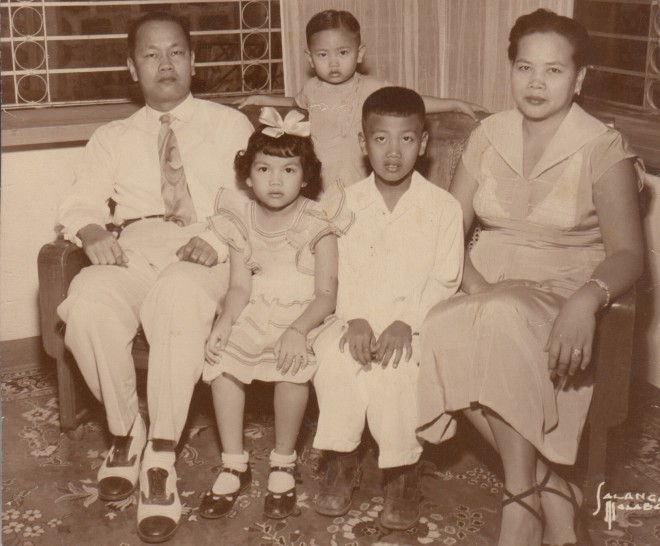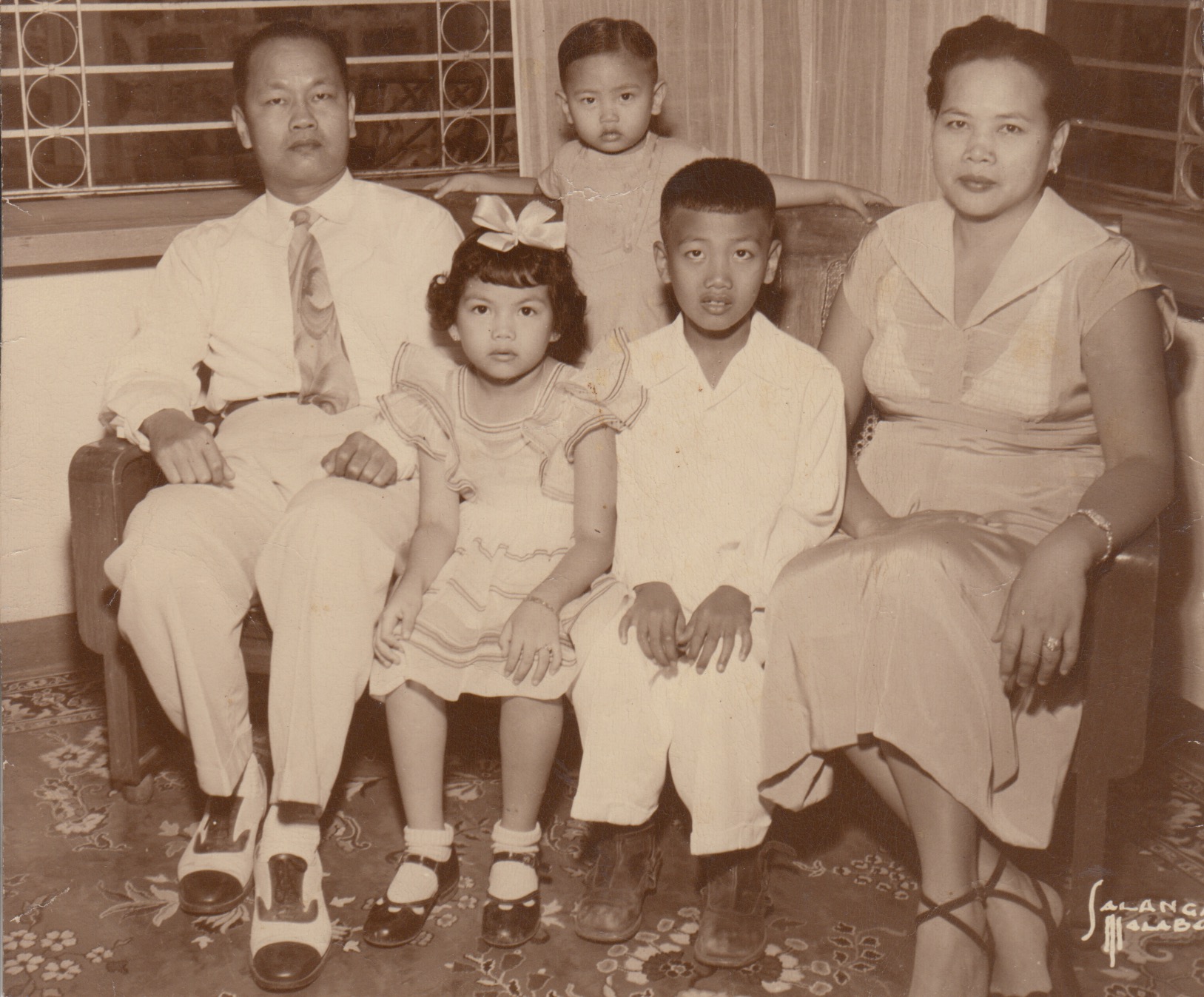
“MOMMY, ilang tulog na lang bago Pasko (How many more sleeps before Christmas)?”
As a 5-year-old, I knew that Christmas was coming. My mom would bring home lots and lots of ube (purple yams). This meant that she would, once again, make her famous halayang ube (purple yam jam), the pride and joy of the family every Christmas season.
My mom was an excellent cook, the best in the family. Her six siblings happily acknowledged this. The entire Tanchoco clan of Nueva Ecija and the Rodriguezes of Malabon would look forward to the feasts she would tender several times a year.
Some of her specialties were rellenong manok (deboned chicken with stuffing), Russian salad (potato salad with carrots and red beets), paksiw na pata with bulaklak ng saging (pork’s legs with banana flowers) and adobong palaka (frogs’ legs), served with thick chicken asparagus soup.
But it was only for Christmas that she would prepare her wonderful halayang ube. I never bothered to ask her why. I was just too happy that she did.
The preparation would start by ordering kilos and kilos of ube from her suki at the Malabon market. She would then wash and peel them very meticulously, and then grate them on the aluminum grater that she would use exclusively for the ube, once a year.
She would use other graters for other food, such as cheese, coconut and potatoes. That particular grater was reserved for the ube, I guess, to keep it razor sharp for the annual ritual. I even remember that this was not a grater that produced extremely fine shavings.
Melt in your mouth
My mom would say that it was good to occasionally bite into some small ube particles and let them melt in your mouth. At first, my mother would do the grating herself. When she got tired, my father would take over. Then a mixture of ube, some water, evaporated milk and sugar would be placed in a giant wok.
(She needed no recipes, no measuring spoons nor cups. She cooked everything by feel, tantiyahan.)
The fire should be very low, and the mixture must be stirred constantly so that nothing would stick to the bottom. My mother would do the stirring at first but, as the mixture became thicker, my father would take over.
He would soon perspire, and my mother’s job would be to dab his forehead with a face towel. And because the fire was very low, my father would be working for a long, long time. Sometimes, he would even have to change his wet shirt.
That was how difficult it was. Even the sandok (ladle) had to be heavy-duty as the mixture would become very, very thick as it cooked. Every now and then, my mom would swirl some milk over it, to keep it moist and creamy.
At this point, the children (sitting on stools around the wok) would be very excited, watching for the mini eruptions at the surface, “Parang volcano, ano (Like a volcano, right)?”
The whole ritual became the focus of the whole family—joy and excitement for the kids and a sense of pride and fulfillment for the parents. Finally, my mom would dip a big spoon into it, pass it around and with big smiles and hearty nods, everyone would agree that the halaya was ready, much to my father’s huge relief and the children’s great delight.
This was too precious to be stored in bottles. It would be kept in my mom’s delicate crystal bowls. It was what she served to guests; it was her gifts to her neighbors and siblings and to her children’s teachers for Christmas.
Proudly served
As a result, our teachers would look forward to Mrs. Rodriguez’s halayang ube every holiday season. And my aunties would proudly serve it to their honored guests, with a loving preface, “Halaya ni Ateng yan (That’s Ateng’s purple yam jam)!”
My mother and father were a traditional couple. My mother never worked outside the house. She was the “ilaw ng tahanan” (light of the home) who kept the house clean, the garden beautiful and the family well-fed, well-clothed and well-taught.
She did not finish her pharmacy course at Centro Escolar de Señoritas. But she was an excellent artist. She crocheted beautiful doilies, tablecloths and even bedspreads. She embroidered pillowcases and handkerchiefs. She sewed her clothes and mine.
Anything she planted grew and flourished. On the other hand, my father graduated from the University of the Philippines in 1933 (with honors) and was professor of mechanical engineering at Mapua Institute of Technology in Manila for many decades.
He was dean beginning in the late 1950s, and on to the ’60s and ’70s, when the institute was one of the best, if not the best, in the country when it came to engineering courses.
My parents differed in their gifts and interests. My mom was an artist who worked and lived by touch and feel. My dad dealt with exact measurements, with a slide rule!
Bonding moments
But, I guess, this annual ceremony of preparing halayang ube together in the kitchen was one of their bonding moments, when my macho father learned to really appreciate my mother’s role in their partnership and take genuine pride in her cooking.
“Mahirap naman talagang magluto (It’s really difficult to cook),” I would hear him say, especially after sweating it out with the halaya. And later, “Masarap talagang magtimpla ang mommy ninyo (Your mom’s blend really tastes good),” while enjoying their labor of love.
Thus, this authentic Filipino dish means more to me than just a delicious tradition for the Christmas season. It is also a way of seeing, in my mind once more, my mom and dad, working feverishly together.
As the French novelist Marcel Proust (of “Remembrances of Things Past” fame) would remember his childhood whenever he bit into a madeleine (a small, rich, shell-shaped cake), I wax nostalgic about my happy childhood and my loving parents whenever I have a taste of halaya.
Nowadays, I guess very few households prepare it in their own homes. It can be bought very easily from numerous specialty shops like Rowena’s in Tagaytay and The Good Shepherd in Baguio.
But I still believe that the homemade ones are still the best. And of course, nothing beats my mom’s halayang ube, anytime, anywhere!









































